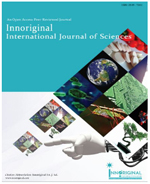ISOLATION, OPTIMIZATION AND QUANTIFICATION OF EXOPOLYSACCHARIDE PRODUCING BACTERIUM FROM WASTE WATER
Abstract
Exopolysaccharides (EPS) are high molecular weight polymers which are long chain composed of sugar residues and secreted by microorganisms into the surrounding environment. Bacterial EPS as a complex mixture of macro molecular poly electrolytes including polysaccharides, proteins and nucleic acids, each comprising variable molecular mass and structural properties. Many bacteria possess an ability to synthesize and excrete exopolysaccharides. Attempt has been made to isolate and identify the EPS  producing bacteria using  basal and malt medium which was maintained in 72hrs at 37°C, the dry weight of the fractionated products  was found to be 1.98 ± 0.13 mg/100ml and 0.89 ± 0.10 mg/100ml in basal and malt medium, respectively. From the results, it was concluded that EPS extract was higher in EPS basal medium than malt medium. Bacteria were identified by their morphological, biochemical characterization. Out of twenty five isolates, isolate no-3,5,7,9,11,15 and 21  was found to be potential isolates for EPS production. EPS production of potential isolate was optimized in nutrient broth containing 2 percent sucrose for different environmental and nutritional conditions viz. incubation periods, pH, temperature, carbon source and different sodium chloride (NaCl) conc. Sucrose was found to be the suitable carbon source to produce EPS. Three days of incubation period was found to be an optimum for production of maximum yield of EPS in nutrient broth containing 4% sucrose. The optimum pH, temperature and NaCl for EPS production were found to be 7.5, 30â°C and 80 mM, respectively.Downloads
Published
2014-09-01
How to Cite
N, K., & A, J. (2014). ISOLATION, OPTIMIZATION AND QUANTIFICATION OF EXOPOLYSACCHARIDE PRODUCING BACTERIUM FROM WASTE WATER. Innoriginal: International Journal of Sciences. Retrieved from https://innoriginal.com/index.php/iijs/article/view/7
Issue
Section
RESEARCH ARTICLE


